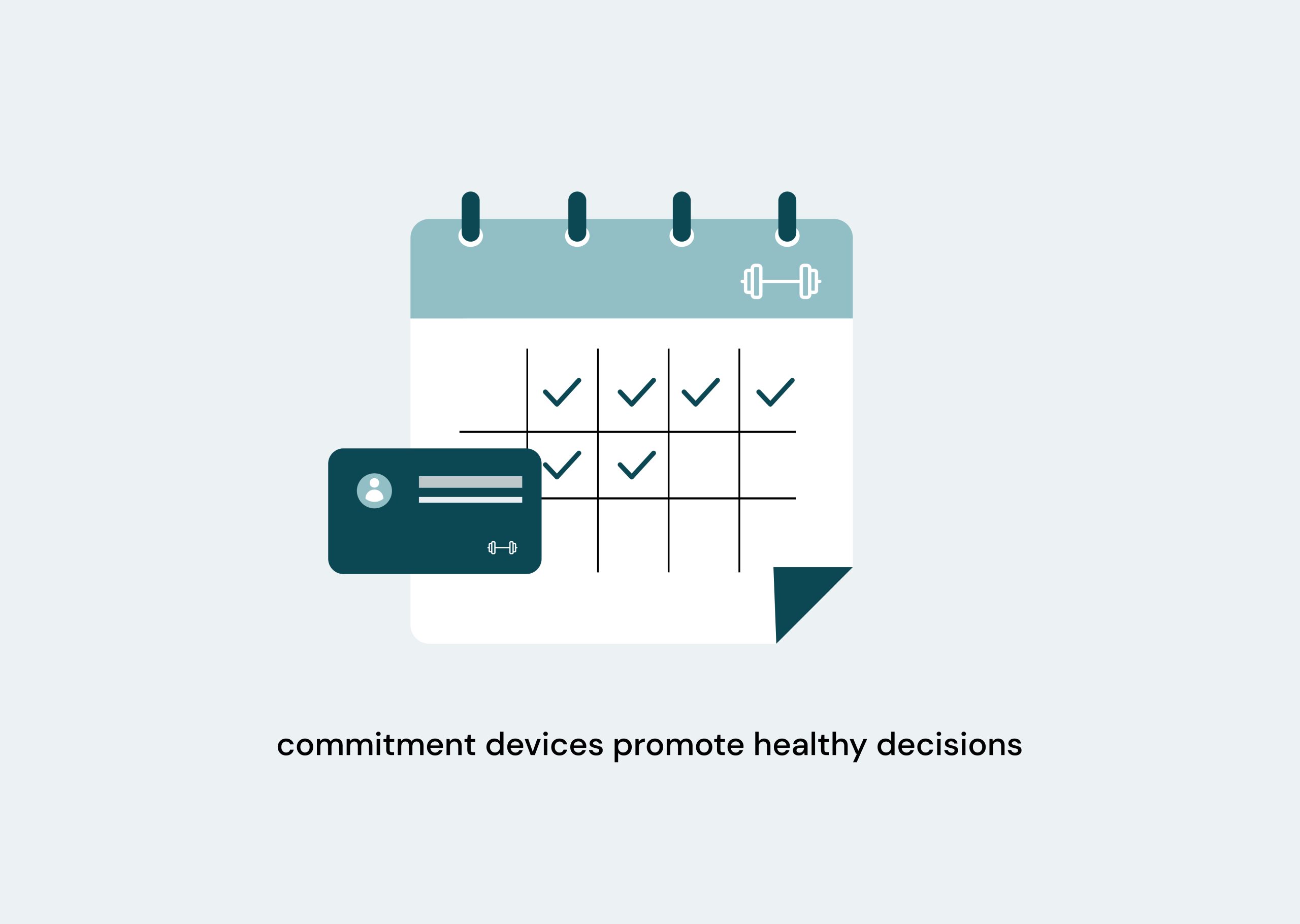
Mastering Your Health Goals: The Power of Commitment Devices
Behavioral economics is a field that recognizes the complexity of human decision-making and how we often struggle to follow through on our intentions. One of the most powerful tools in behavioral economics is the commitment device, which can help us bridge the gap between our intentions and our actions. Commitment devices are ways in which people voluntarily pre-commit to achieving their goals, either by introducing a present-day cost or by limiting future choices. In this blog, we will explore how commitment devices can be used to promote healthy lifestyle and health decisions.
The concept of commitment devices is not new, and people have been using them for centuries to help them achieve their goals. The most well-known example is probably the New Year’s resolution, which is a type of commitment device where people set a goal for themselves at the start of the year and then try to stick to it. However, as we all know, New Year’s resolutions often fail, and the reason is that they lack the specific and tangible action steps necessary for success. This is where commitment devices can help.
One way to use commitment devices to promote healthy lifestyle and health decisions is by introducing a present-day cost. For example, let’s say you want to start going to the gym more regularly, but you often find yourself skipping workouts due to lack of motivation. One way to address this issue is by signing up for a full year of gym membership upfront. By doing so, you are introducing a present-day cost (the cost of the membership) that will motivate you to go to the gym more regularly. This commitment device works because you will feel a sense of guilt or regret if you don’t take advantage of the money you’ve already spent.
Another way to use commitment devices is by limiting future choices. For example, let’s say you are trying to eat healthier, but you often find yourself giving in to unhealthy cravings when you have junk food in the house. One way to address this issue is by not keeping junk food in the house at all. By limiting your future choices, you are making it easier to follow through on your intention to eat healthier. This commitment device works because you are removing the temptation and making it easier to stick to your plan.
Commitment devices can also be used in other ways to promote healthy lifestyle and health decisions. For example, you can use a commitment device to help you quit smoking by setting a quit date and telling your friends and family about it. This will create a sense of accountability and increase your motivation to follow through on your intention to quit. You can also use a commitment device to help you get more sleep by setting a bedtime and sticking to it every night.
To sum up, commitment devices can be a powerful tool for promoting healthy lifestyle and health decisions. By implementing specific and tangible action steps, such as introducing a present-day cost or limiting future choices, we can increase our motivation to follow through on our intentions. So whether you’re striving to eat healthier, exercise more, or quit smoking, utilizing commitment devices may be the key to achieving your goals.



FEEL FREE TO DROP US A LINE.